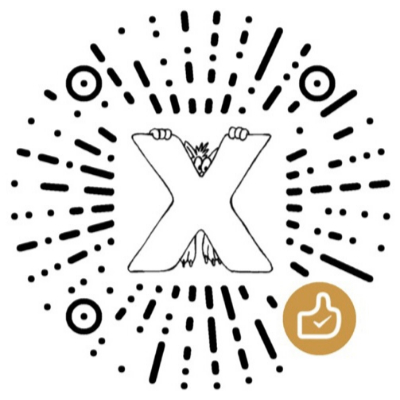Which of the four temperament types in psychology do you belong to?
Temperament refers to the individual's relatively stable psychological characteristics and behavioral tendencies, reflecting the individual's typical response method to emotions, emotions and behaviors. It includes the speed, intensity, stability and direction of psychological activities.
Specifically, temperament includes the following elements:
- The speed of psychological activities: refers to the speed of an individual's reaction in psychological processes such as perception, thinking and language. Some people react quickly and think quickly, while others are relatively slow.
- The intensity of psychological activities: refers to the strength of an individual's emotional experience, as well as the strength of willpower and decisiveness. Some people have greater emotional fluctuations and are easily affected by external emotions, while others have relatively stable emotions.
- Stability of psychological activities: refers to the individual's performance in terms of concentration, durability and stability of attention. Some people are able to keep their focus for a long time, while others are prone to distraction.
- Directionality of psychological activities: refers to the individual's introversion and extroversion tendencies. Introverts prefer to be alone and think about problems, while extroverts prefer to socialize and interact with others.
Temperament is relatively stable and not easily changed, and is usually influenced by experience and environment in the process of genetics and individual development. Everyone’s temperament types and characteristics are unique, and to a certain extent they shape individual behavior, thinking and emotional expression. Temperament is closely related to personality, but it is not equivalent to personality. Personality more comprehensively reflects the individual's overall characteristics and behavioral patterns.
Temperament theory is an important branch of the study of individual differences in humans in the field of psychology. It explores the relative stability of individuals in terms of psychological characteristics and behavioral tendencies, and aims to describe and explain individual differences in people's emotions, cognition, and behavior.
Classic temperament theories include:
Four Temperaments Theory: It originated from ancient Greek humoral theory, which Hippocrates developed into medical theory. He believes that certain human emotions, emotions and behaviors are caused by imbalance in body fluids. The theory of humoral fluids believes that the human body is composed of four types of fluids, namely: blood (corresponding to polyhematism), mucus (corresponding to mucus), yellow bile (corresponding to bile quality) and black bile (corresponding to depression). These four liquids will form various human functions when they develop in a balanced manner; when the body fluids are unbalanced, they will cause diseases. Different emotions of a person are also considered to be related to body fluids. Different personalities will be formed according to the different innate proportions of body fluids in each person.
Five-Factor Model: Also known as the Big Five personality theory, it is one of the most widely used temperament theories. This model divides individual differences among people into five dimensions, namely, neuroticism, extraversion, openness to experience, agreeableness and conscientiousness. These five factors are considered to be able to describe and predict a person’s behavior, emotions, and cognitive patterns.
Eysenck's Three-Factor Model: A theory proposed by Hans Eysenck, which divides temperament into three dimensions: neurotic, extraversion and spirituality. Neuroticism reflects the individual's emotional instability and anxiety level, extroversion involves social behavior and activity levels, while mentality is related to individual's stimulus seeking and impulse control.
Cloninger's Temperament Theory: proposed by Robert Cloninger, emphasizing the influence of genetic and environmental factors on temperament. This theory divides temperament into three dimensions: Novelty Seeking, Harm Avoidance and Reward Dependence. These three dimensions involve the way an individual responds to motivation and punishment.
There is no distinction between good and bad in social value evaluation. It can be said that each temperament type has positive or negative elements. In the process of self-improvement of personality, you should play to your strengths and avoid your weaknesses. Temperament cannot determine a person's ideological and moral qualities and activity achievements. People of all temperaments can contribute to society, and of course their negative elements will also have a negative impact on people's behavior.
Among the crowd, there are fewer typical temperament types, and more are comprehensive. Most people who have not received temperament tests may not be able to explain their temperament type clearly. Testing is the most basic understanding of their personality traits.
This test is a 60 question-and-answer question about the four temperament theories. Psychologically divides a person's temperament types into four categories: sanguine, phlegmatic, choleric and melancholic. Each temperament type has different psychological characteristics and behavioral tendencies.
Polyhematogenic (sanguiine): Polyhematogenic people are usually positive, cheerful and lively, and are good at socializing and socializing. They are energetic, curious about new things, and often show optimism, pleasure, and excitement. People with a leukemia tend to like adventure and change, easily adapt to new environments, and have high social and expressive abilities.
Pselegmatic: People with mucous substances are usually calm, steady, gentle and calm. They show lower emotional excitement, balance things, and are not easily disturbed by external emotions. People with slime quality like harmonious and comfortable environments, and do not like conflict and tension. They tend to think carefully and make decisions more cautiously, but may show lower initiative and risk-taking.
Choleric: People with bileric are usually positive, decisive and goal-oriented. They have high motivation and self-confidence and like to pursue success and competition. People with bile dysfunction are often decisive and focus on efficiency and results. They may show higher desire for dominance and self-proclaim, but may also be more impatient and irritable.
Melancholic: Depressed people are usually sensitive, thoughtful, and more restrained. They have strong insight and thinking skills in things, and like to be alone and think deeply. Depressed people often pay attention to details and pursue perfection, and may show higher emotional vulnerability and a tendency to demand themselves.
There is no right or wrong in the test question. Don’t guess what is the correct answer when answering. Please answer based on your actual situation and your true thoughts.
Methods to determine temperament type :
- According to the test results, if the score of a certain type of temperament is significantly higher than the other three types, all of which are more than 4 points higher, it can be determined as this type of temperament.
- In addition, if a certain type of temperament score exceeds 20 points, it is a typical type;
- If a certain type of score is between 10 and 20 points, it is a general type.
- If the scores of the two temperament types are close, the difference is less than 3 points, and it is significantly higher than the other two, and more than 4 points, it can be determined as a mixed type of the two temperaments.
- If the scores of the three temperaments are higher than the fourth type and are close to each other, it is a mixed type of the three temperaments.


